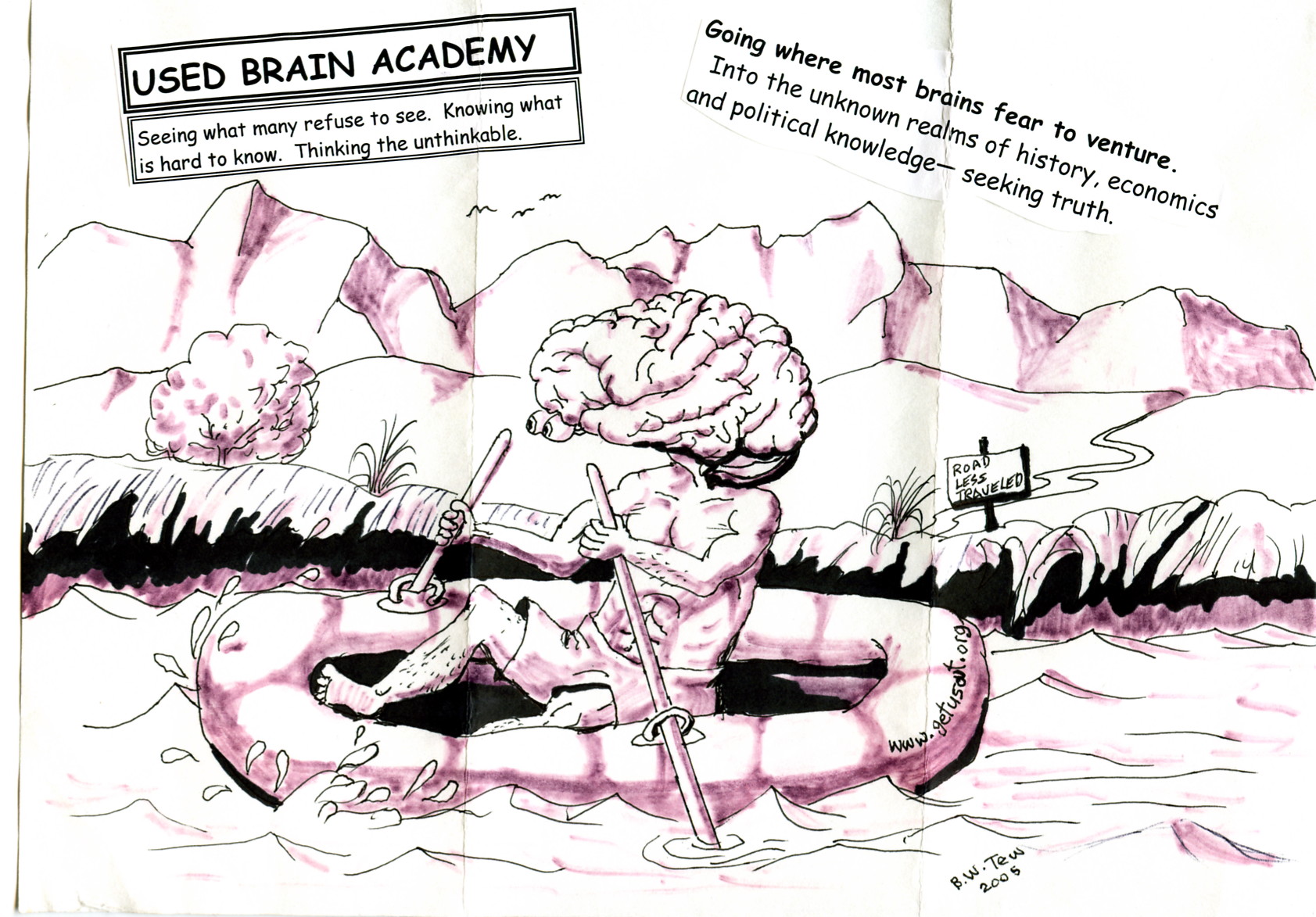 Recent study has revealed a remarkable and cunningly savage interplay involving four species currently inhabiting North America.
Recent study has revealed a remarkable and cunningly savage interplay involving four species currently inhabiting North America. A woman whose husband has been in a serious accident is sitting in a hospital emergency room. The doctor approaches to announce
A woman whose husband has been in a serious accident is sitting in a hospital emergency room. The doctor approaches to announce Bliss Tew 2005
Bliss Tew 2005
 Recent study has revealed a remarkable and cunningly savage interplay involving four species currently inhabiting North America.
Recent study has revealed a remarkable and cunningly savage interplay involving four species currently inhabiting North America.
Democratica duplicitus is an aggressive and indiscriminate predator found in surprisingly large numbers wherever the light is dim.
They rely on two principal modalities for the capture of prey. The most common is a form of mimicry utilizing specialized structures
to lure the victim within striking range; from a distance D. duplicitus is very attractive but in close proximity is uniquely dangerous.
A second, seemingly “last resort” method of prey capture is perhaps the most bizarre. Prey items initially attracted by the mimicry of
Democratica but still reluctant to approach are confused by the predator’s apparent ability to occupy two positions at the same instant, at which point
the prey are easily harvested. Both forms of predation are made possible by the incorporation of a symbiotic organism to be discussed later.
Another important predator is Republicania artificialis, initially thought to be a recent descendant of Americanus justicia whose fossils have been
discovered at 200 year old sites in the east. (Reports that living members of this presumed extinct species have been sighted are confirmed).
It should be noted that a growing number of authorities have proposed that R. artificialis is rather a sub-species of D. duplicitus. This hypothesis
is supported by the fact that both predators employ the same symbiotic partner to the same general illusory effect; in addition, some members of each
community have been noted to cross species lines and interbreed.
Neither predator group would be successful without the cooperation of a particularly insidious organism known as Irresponsibilicus journalistica.
This symbiont attaches itself to the host animal (whichever species is convenient) and provides the bright, attractive structures useful in luring
and confusing prey. Since I. journalistica has only a limited capacity to dismember prey it relies on the very efficient but rather sloppy eating
habits of the predators.
At the base of the ecosystem is the primary prey species, Publicum gullibilis. These animals are ideal targets for the predator/symbiont combination
since P. gullibilis is easily distracted by bright objects. A noted decline in the overall viability of the prey population with regard to individual
members has been linked to the unsound nature of the predation as well as to the sheer scale of the carnage. Further research begs to be undertaken.
Mark Whitney
 And I had done a hellish thing, and it would work 'em woe.
And I had done a hellish thing, and it would work 'em woe.-Samuel Taylor Coleridge, The Rime of the Ancient Mariner, 1798
A major research institution has recently announced the discovery of the heaviest chemical element yet known to science. The new element has been named
"Governmentium". Governmentium has 1 neutron, 12 assistant neutrons, 75 deputy neutrons, and 11 assistant deputy neutrons, giving it an atomic mass of 312.
These 312 particles are held together by forces called morons, which are surrounded by vast quantities of lepton-like particles called peons.
Since governmentium has no electrons, it is inert. However, it can be detected as it impedes every reaction with which it comes into contact. A minute amount
of governmentium causes one reaction to take over 4 days to complete when it would normally take less than a second. Governmentium has a normal half-life
of 2 to 4years; it does not decay, but instead undergoes a reorganization in which a portion of the assistant neutrons and deputy neutrons exchange places.
In fact, governmentium's mass will actually increase over time, since each reorganization causes some morons to become neutrons, forming isodopes,
This characteristic of moron-promotion leads some scientists to speculate that governmentium is formed whenever morons reach a certain quantity in
concentration. This hypothetical quantity is referred to as "Critical Morass". You will know it when you see it.
-Source Unknown